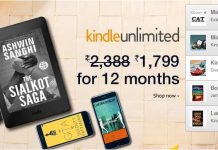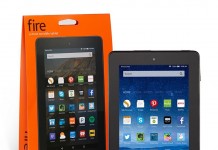 It is time for me to give an ereader a serious shakedown. In Slow Reading, I asserted that print books are still the superior technology for reading anything of length or substance; that view remains. However, it is clear that the writing and publishing world is changing. I am discovering excellent writers who are publishing their material independently, often as ebooks. I want to read this material, but not on a computer, and without printing it. A specialized reading device might fill the gap.
It is time for me to give an ereader a serious shakedown. In Slow Reading, I asserted that print books are still the superior technology for reading anything of length or substance; that view remains. However, it is clear that the writing and publishing world is changing. I am discovering excellent writers who are publishing their material independently, often as ebooks. I want to read this material, but not on a computer, and without printing it. A specialized reading device might fill the gap.
Amazon’s ereader, the Kindle, came to Canada in late 2009. No doubt there are good reasons not to buy a Kindle. Personally, I find Amazon’s competitive practices too aggressive (such as disabling the buy button for publishers who do not use their print-on-demand service). Also, I was vaguely aware that Kindle uses Digital Rights Management (DRM) to try to restrict access to it content, unlike Sony’s Reader which uses the open epub format. I am better informed now. However, Amazon was the first to offer a wireless reader in Canada. I was curious and felt the need to play. I put the Kindle on my Christmas list. The Kindle was not previously available in Canada because Amazon had not reached a deal with local wireless providers. Even now the deal is limited. In Canada, Kindle wireless only permits access to Amazon’s store and Wikipedia. In the US, users can also browse the web, read blogs, and email documents to the device. My hope is that the Canadian wireless deal will eventually match the American one. Amazon has said as much about their document delivery service. Sony later followed with wireless capability but the equivalent product costs a hundred dollars more.
I ordered the Kindle 2 with six-inch display for $259.00 CAD. (Just recently the larger Kindle DX has become available internationally.) It arrived very quickly, left on my front porch even though no one was home. It was a Christmas wish so I had to wait until Christmas to open the present. I felt that delicious feeling of geeky discovery like playing with the web back in the early nineties. The Kindle was slimmer and lighter than I expected. Although I have never experienced eye-strain from back-lit devices, I prefer the reader’s e-ink. I can read it comfortably in the living room, like a book, and distinctly unlike the visible and even anti-social presence of a laptop. When the device is turned off the screen shows black and white pictures of literary figures; nice touch. My first impression was that the Kindle had potential for long form reading.
Over the next several weeks, when I read the Kindle in public it always stirred quiet attention. In a plane, I wondered if the steward would tell me to turn it off during takeoff, like other electronic devices. The steward looked at me, looked at the Kindle, then walked on. It appears the Kindle is considered more book than device.
This post is the first in a nine-part series about my experiment with the Kindle. In the series, I will share my experience with its hardware and software, reading books and subscriptions, and much more. I will also return to the Apple tablet. I will say in advance my finding that single-purpose reading devices like the Kindle can be expected to play an ongoing role in long-form reading, supplanting some but not all of the territory previously fulfilled by print books.
Editor’s Note: This article, the first in a series, is reprinted, with permission, from John Miedema’S blog. John is a graduate of the Master of Library and Information Science (MLIS) program at the University of Western Ontario. In October, he presented at the Library of Congress on his recently published book, Slow Reading. He also developed open source software which links bibliographic data from Open Library to web pages and library catalogues. Articles on the software were published in Information Standards Quarterly and the Code4Lib journal. PB

































It’s helpful to remind buyers the Kindle 2 is $259 + the cost of the case ($30 more, optional). For protecting the device, and just easier to hold, the case should always be recommended. It doesn’t impact the comparison to the Sony unit as its case is $40 extra.
The wireless thing is, to date, more convenience than necessity (esp. outside the US). It’s nice having free Wikipedia access (esp. in enhanced mode though finding that mode is not obvious at first); the dictionary is a plus; and an online bookstore a plus. Still, adding content via USB or linked to your PC Kindle version is dead simple.
It’s helpful to stay focused on what the Kindle is designed to do — provide an enjoyable reading experience for long-form text heavy “timeless” material in a trade-paper form factor. It’s not a substitute for a netbook / laptop; it’s role in life is not to surf the web or grab real-time info or chat with friends or update facebook while reading. And it’s not currently designed to “write extensive notes in the margins” as one might do in an academic environment.
What I’ve found such a big plus is being exposed to a wealth of (free) material long buried and out-of-print or hard to find / stumble upon. Alternately, the “first chapter sample” of Amazon makes exploring new works by living authors easier.
Finally, whether it is on a Kindle or some other device, Amazon itself is committed to a business built on content distribution unlike the makers of every other device option which are rooted in consumer electronics (Barnes and Noble’s Nook being an exception although currently it is not sold outside of the US). Amazon’s understanding of content, longer term, gives it the opportunity to provide the best solutions for the book reading public.
John,
Couldn’t easily find the article on your site.
But wanted to add that re
“Also, I was vaguely aware that Kindle uses Digital Rights Management (DRM) to try to restrict access to it content, unlike Sony’s Reader which uses the open epub format. I am better informed now.”
The Sony readers use ePub WITH Adobe DRM over it.
While the ePub format itself is open, the Adobe DRM added to it closes it up, except to those who have purchased the book from another vender who also uses the licensed Adobe DRM method, although at the moment the Sony readers are unable to read the nook’s Adobe DRM’d versions for some reason.
– Andrys
Thanks Andrys. That is a frustrating complication.
Yes it is, but at least a start. I guess if there is a problem between Adobe and the device maker (definitely so with Apple’s Steve Jobs as seen in several articles yesterday) and probably with Amazon as a competitor of some type, then it’s hard for some to be dependent on Adobe’s licensing for the ‘standardization’ of DRM. There is always someone whose sole control is worrisome.
Apple is putting its own DRM over the ePub for the iPad too. It never ends.
But I can also see the need to reassure authors and publishers. I wish they would find a less buyer-unfriendly way though.
Glad to read you here.